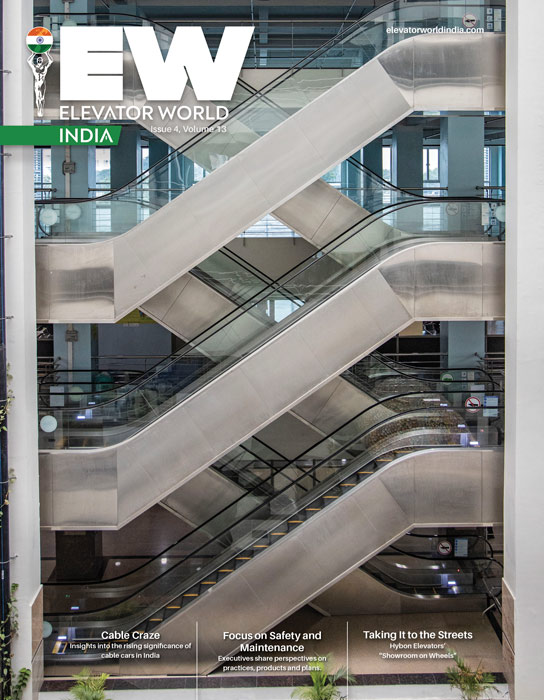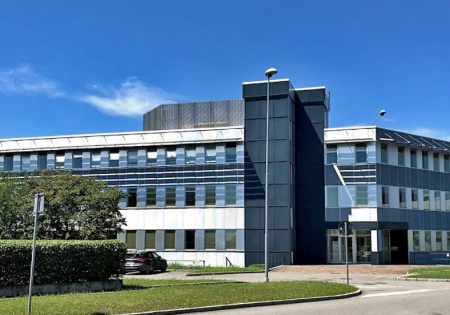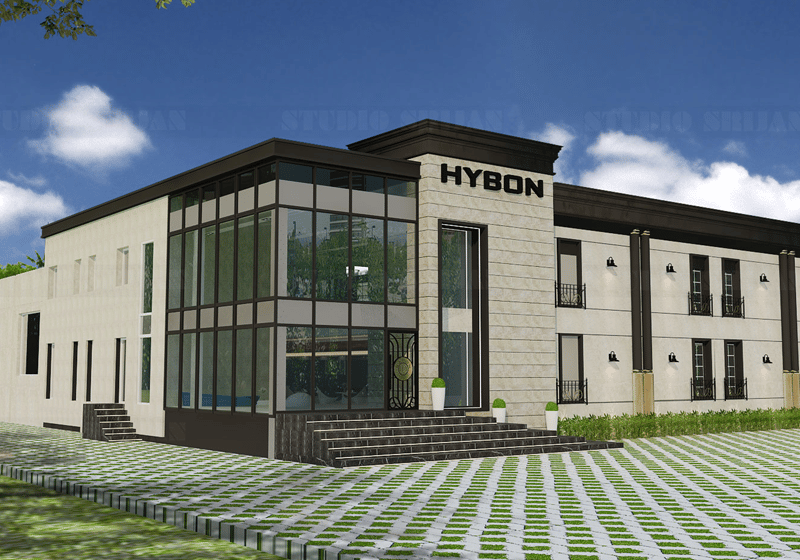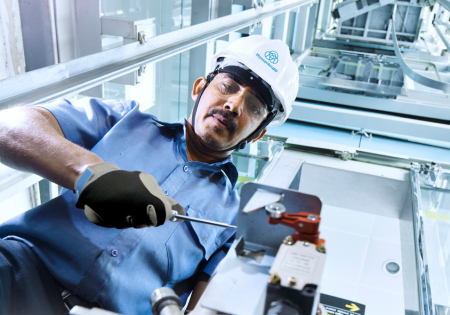VT equipment owners often find themselves at the mercy of unscrupulous vendors in states lacking oversight.
Technology plays a very important part in enhancing the safety of end-users. Closed-loop operation of motors, integrated controllers, electronic overspeed governors, remote monitoring of lift shaft sensors and limit switches, etc. have all combined to provide unprecedented levels of safety.
Technology has also boosted the capabilities of field technicians. In earlier times, field maintenance technicians were trained by first being inducted into lift installation, testing and commissioning. Then, they were exposed to maintenance work under the guidance of senior field supervisors. But, with mobile technology, field technicians are now assigned call-backs through apps, and are able to see the complete history of the lift on their mobile devices before deciding on the best course of action. They can also connect with senior engineers using mobile video calls to solve problems. Senior engineers can guide field technicians to correct diagnoses and speedy repairs, which results in improved mean time between failures.
The typical result is that, within five or six years, elevators start requiring large expenses for maintenance, costs that are often beyond the means of the building societies.
Regulation
A uniform act for regulating vertical transportation (VT) across India is very much needed. There are only eight or nine states in India that have a dedicated act/rules for VT. In most of the other states, there is no governing body over the VT industry. The number of unauthorized small vendors has mushroomed in these states. Most of these vendors purchase equipment cheaply from sources in China or India, install the equipment through subcontractors, then forget about it. Maintenance of such elevators becomes a major issue when the society of the building is formed. Society members are often ignorant of VT maintenance issues and go for the vendor offering the lowest-price annual maintenance contract (AMC) without ascertaining its background, experience and capability. The typical result is that, within five or six years, elevators start requiring large expenses for maintenance, costs that are often beyond the means of the building societies.
Hence, if a uniform act for manufacturing, installation and maintenance of elevators and escalators is implemented across India, there will be available authorized vendors for these categories, which should help both in improving quality and reducing accidents.
After milking the society for 3-4 years, these vendors abandon the VT unit by quoting a very high price. When society caretakers decide to call the OEM in such cases, they are shocked when they realize their lifts are ruined and can only be brought back to normal at considerable expense.
Maintenance
Preventive-maintenance visits had to be postponed during lockdown and post-lockdown periods in most cities, but there has not been much impact on VT unit performance. Because the usage of lifts was greatly reduced during this period, there were significantly fewer call-backs. Meanwhile, housing societies and malls have begun asking for free extensions of their AMCs for a duration equivalent to the period in which preventive service could not be given.
As regards remote maintenance, it should be noted that only monitoring is possible with the prevalent technology; repairs still have to be carried out through site visits by technicians.
Technology
Instead of keeping physical service cards and remembering to do preventive maintenance on the desired date, field technicians are now getting preventive-service reminders through apps. Customers are also getting advance notice of preventive service visits of technicians on their registered devices. Technicians upload photos/short videos of the VT unit showing the cleaning/servicing and safety inspections they performed. This not only records the service provided, but also helps senior engineers assess and validate the field technicians’ quality of work done.
Maintenance
Housing societies are often caught in a dilemma regarding the maintenance of VT units. They must call for multiple quotations from various local vendors (apart from the OEM), then discuss it in their meetings. Usually, the society stakeholders are nontechnical persons not knowing much about VT maintenance. Their first preference is always to go for the cheapest quotation.
The state government lift inspectorate should be more proactive to prevent such local vendors from manipulating unsuspecting residential societies.
Local vendors usually play a trick on society stakeholders: they keep the price low by not mentioning free parts replacement during the term of the AMC. Instead, they give various parts quotations of small amounts at different times to boost their income.
Meanwhile, society stakeholders don’t understand the fact that they are spending more on maintenance. Some vendors may even replace the OEM’s lift controller or motor without informing the building society caretakers just because original replacement parts are not available to them. Thus, the original makeup of the VT unit is lost, while society members are unaware of the changes. After milking the society for 3-4 years, these vendors abandon the VT unit by quoting a very high price. When society caretakers decide to call the OEM in such cases, they are shocked when they realize their lifts are ruined and can only be brought back to normal at considerable expense.
The state government lift inspectorate should be more proactive to prevent such local vendors from manipulating unsuspecting residential societies. They should declare a list of vendors authorized by them to all societies, malls, hotels and hospitals. They should also clearly give orders to societies to always give the AMC to the OEM and, only in exceptional cases, allow other authorized vendors.
Get more of Elevator World. Sign up for our free e-newsletter.





